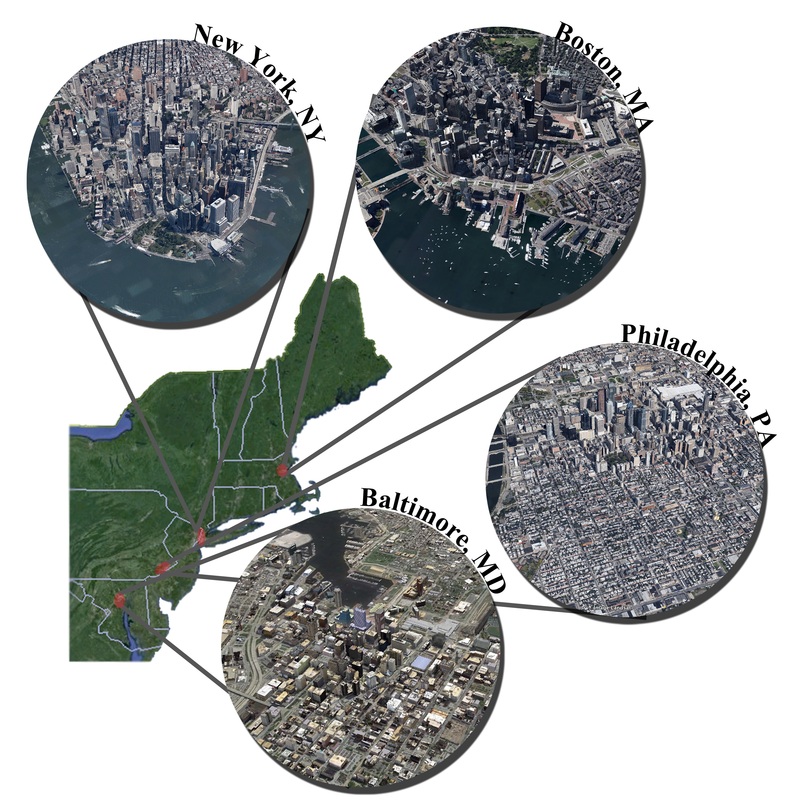|
-- Colin Donihue PhD Candidate Humans are rapidly changing landscapes, but the increasing realization that species can rapidly adapt to their dynamic surroundings has led to the intriguing possibility that ecological systems may be more resilient to human land use than previously appreciated. The processes governing the adaptability of species in human contexts are still relatively unknown as the discipline's historical modus operandi (think Darwin) has been to study evolution in more natural or laboratory contexts. However, humans are one of the most potent drivers of adaptation (Hendry and Kinnison 1999), so it makes sense to study those adaptive dynamics where humans are most prevalent and ecological stressors most varied, abundant, and novel: cities. A fellow student, Max Lambert, and I just wrote a perspective article for AMBIO* making this case. Let me elaborate a bit more on our argument. The field of urban ecology has flourished in the last couple of decades. Within that time it has made several exciting discoveries leading to fundamental paradigm shifts within the discipline. Where scientists first focused on ecology in cities (e.g., distribution of raccoons relative to trash) they have now shifted to studying the ecology of cities (e.g., heat island effect), explicitly acknowledging the inextricable role of humans in the dynamics of the system. As numerous studies have convincingly demonstrated (see the Phoenix and Baltimore LTERs), cities are functional ecosystems with unique and characteristic ecologies. We argue then that it follows that the species composing those communities would be evolving to their novel and dynamic contexts. Tracking evolution and testing for adaptive trait changes in city species requires a multi-step research program. Initially, identifying traits that vary with environmental context will be facilitated by the gradients that characterize many of these potential adaptive drivers in urban settings (thermal, food, noise, habitat structure, chemical; Fig. 1). However, context-dependent trait variation does not necessarily imply adaptation, so subsequent common garden experiments or reciprocal transplant experiments can give insight to the genetic basis and fitness implications of the observed trait variability. These experiments are often logistically complicated in city centers, but already great examples exist of creative experiments that begin exploring these questions. Why is this important? Studying evolution in urban contexts enables new insight difficult or impossible to gain in more natural settings on the adaptive potential of species caught in humanity's headlights. We propose that species in cities may be evolving faster than previously appreciated, in time with the fastest rates of urbanization in human history (Seto et al. 2010). Furthermore, because cities often encompass predictable and comparable gradients in many of these potential adaptive drivers (Fig. 1), comparing the evolutionary trajectories of urban species in multiple cities (Fig. 2 and manuscript text) will give great insight to the question of repeated and therefore predictable evolution, a fundamental point of debate since Darwin. Urban planners are calling on ecologists to help design urban environments to better achieve conservation goals (Felson et al. 2013). Understanding the cause, rate, and predictability of species adaptation to humans will better inform urban design, species conservation, and our basic understanding of one of biology's few constants, evolution. Want to read more about applied work going on in Urban Ecology and Landscape Architecture? The Yale Hixon Center is doing some really exciting work.
A great deal of work by other researchers is generally referenced in this post. Please see published paper for full citations and attribution. * If you can't access the paper please email me for an uncopyrighted draft of the manuscript. Works cited: - Felson, A.J, E.E. Oldfield, and M.A. Bradford. 2013. Involving ecologists in shaping large-scale green infrastructure projects. BioScience 63: 882-890. - Hendry, A.P., and M.T. Kinnison. 1999. The pace of modern life: Measuring rates of contemporary microevolution. Evolution 53: 1637-1653. - Seto, K.C., R. Sanchez-Rodriguez, and M. Fragkias. 2010. The new geography of contemporary urbanization and the environment. Annual Review of Environmental Resources 35: 167-194.
33 Comments
|
Archives
November 2019
Categories
All
|


 RSS Feed
RSS Feed
